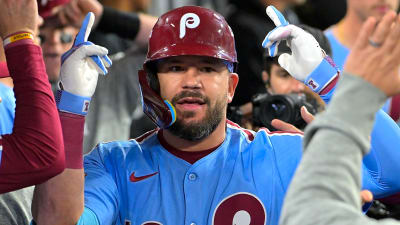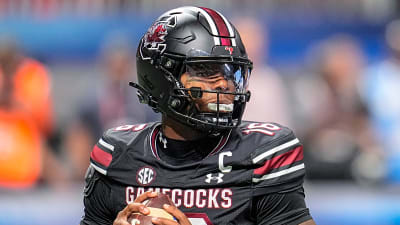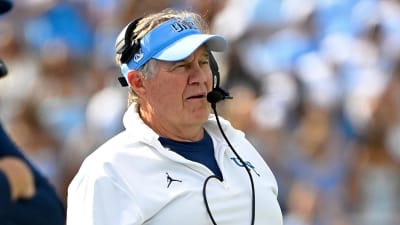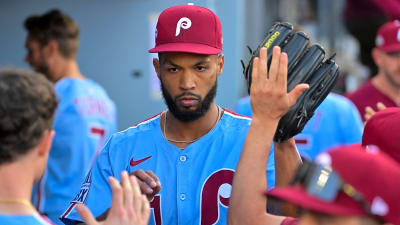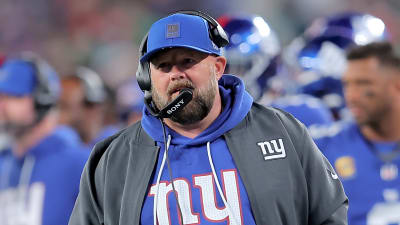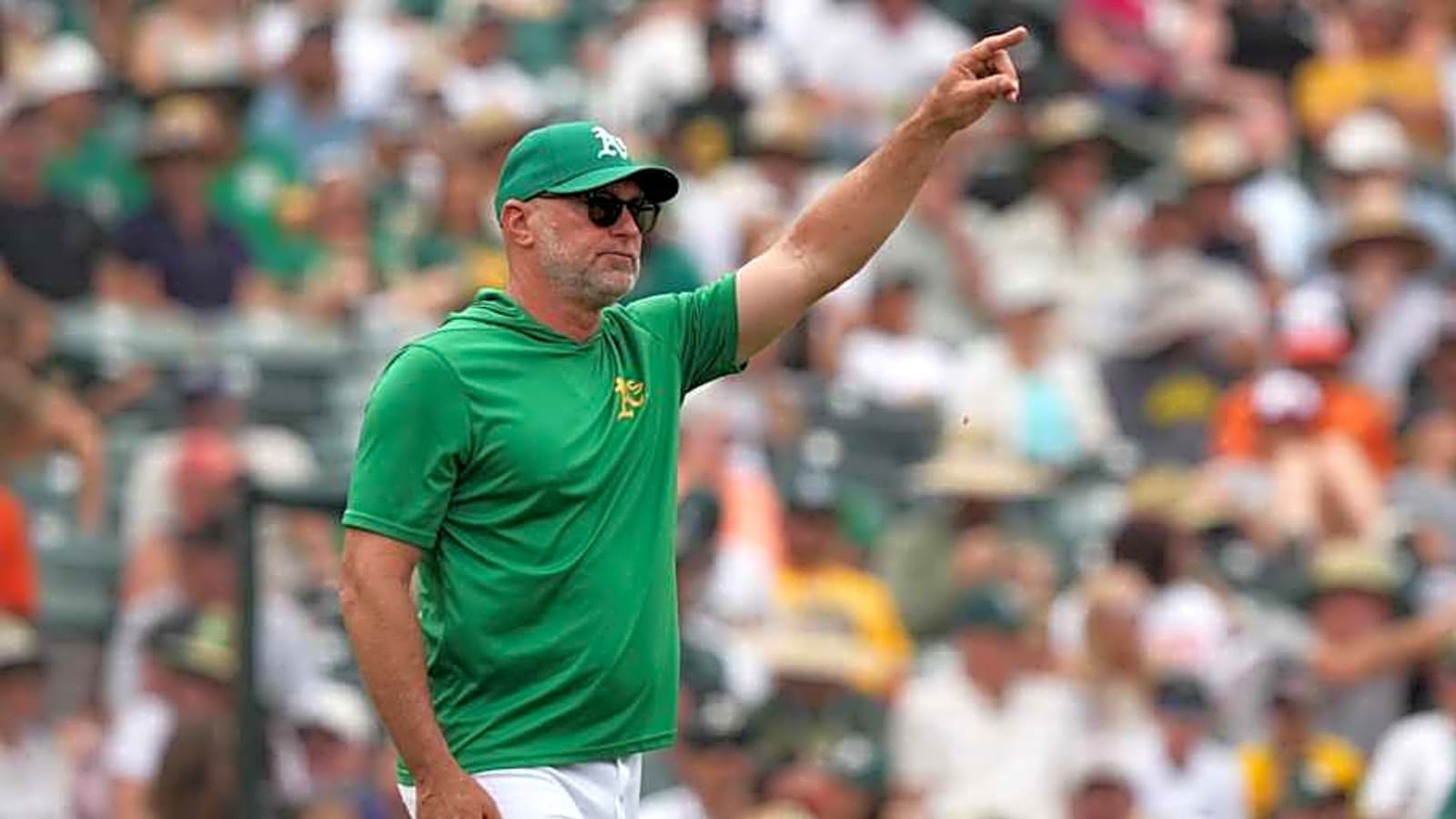
The A's are facing a few questions entering this offseason, but none may loom larger than how they attack the late innings this winter. They came into the 2025 campaign with one of the best closers in baseball in Mason Miller, but they traded him away at the deadline, landing the No. 3 prospect in all of baseball in Leo De Vries from the San Diego Padres.
Once Miller departed, manager Mark Kotsay and his club went with a closer by committee approach, using data to determine which relievers would be best suited for certain situations, and that led to guys like Tyler Ferguson, Michael Kelly and Sean Newcomb all entering the game well before the late innings on occasion, despite each of the three being nominees as the team's traditional closer.
We asked if the front office would be targeting a more established closer for next season, or if they'll end up rolling with the bullpen formation that worked well for them in the final two months of the campaign. The A's 2.99 bullpen ERA from August 1 through the end of the season was the second-best in baseball after all.
A's GM David Forst said that the team will be "opportunistic" when it comes to the bullpen, and added, "we will certainly look for talent out there on the free agent market or the trade market, but it's nice to know there's a lot of experience coming back."
There will be closing options on the free agent market, and the A's should have enough talent available to land a pretty decent closer option via trade, but given the team's history, they may not be going that route.
A Look at Past Closers
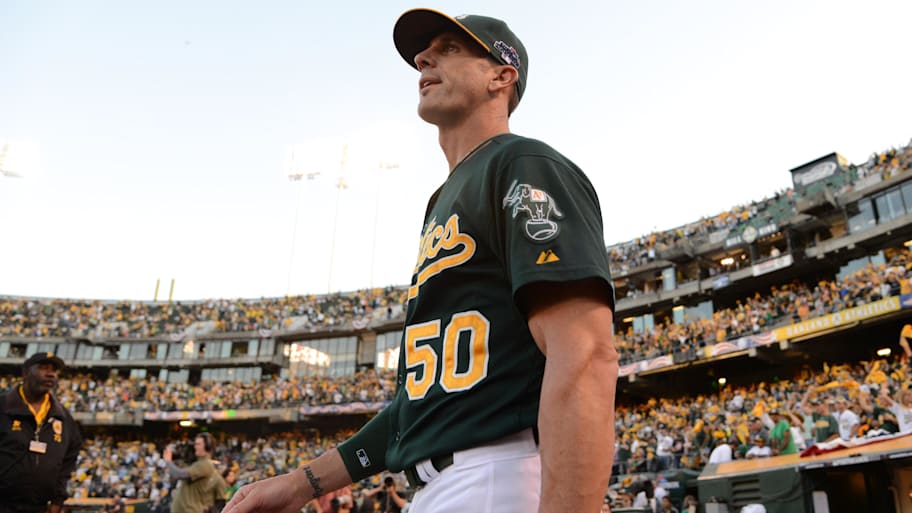
Going back to the early 2000's, the A's have a history of promoting guys to the position rather than having success with adding big-ticket relief pitchers.
In 2000, the A's rolled with Jason Isringhausen, and he locked down 33 saves for the club en route to an AL West crown. He'd saved all of one game before he was acquired by the A's for former closer Billy Taylor in 1999, and he ended up closing out eight games with the Green and Gold that season, then 33 in 2000 and 34 in 2001 before hitting free agency.
With Isringhausen out the door, the A's landed Billy Koch from the Blue Jays for Eric Hinske and Justin Miller, and he was much more of an established presence at the back-end of the bullpen, having saved 100 games over three seasons with Toronto. He ended up shutting the door on 44 games for the A's in 2002.
The A's traded him to land their next closer, Keith Foulke, for the 2003 season. He too had saved 100 games before he got to Oakland, though his were spread over six seasons. Foulke saved 43 games for the A's in 2003 before he hit free agency and landed with the Boston Red Sox.
They ran with Arthur Rhodes to begin the following year, and then acquired Octavio Dotel in June of of 2004. The A's ultimately did not make the postseason that year, and they ended up tearing things down, trading away Mark Mulder and Tim Hudson that winter.
When they made it back to the postseason in 2006, it was 22-year-old Huston Street closing games for them. Two years later he was traded to the Colorado Rockies with Carlos González in the Matt Holliday deal. In 2009, Andrew Bailey won the AL Rookie of the Year award and saved 26 games.
With the club still struggling after a couple of seasons, the A's decided to trade Bailey (and Gio González in a separate deal) in the move that landed Josh Reddick in Oakland.
In seven years before he reached the A's, Grant Balfour had saved all of eight games. He notched two more in 2011 with the club, and then became the team's closer in 2012. During this span of competitive baseball, the A's used veteran relievers, rookies, and even a couple of more established closers in the ninth inning.
The Other Side of the Coin
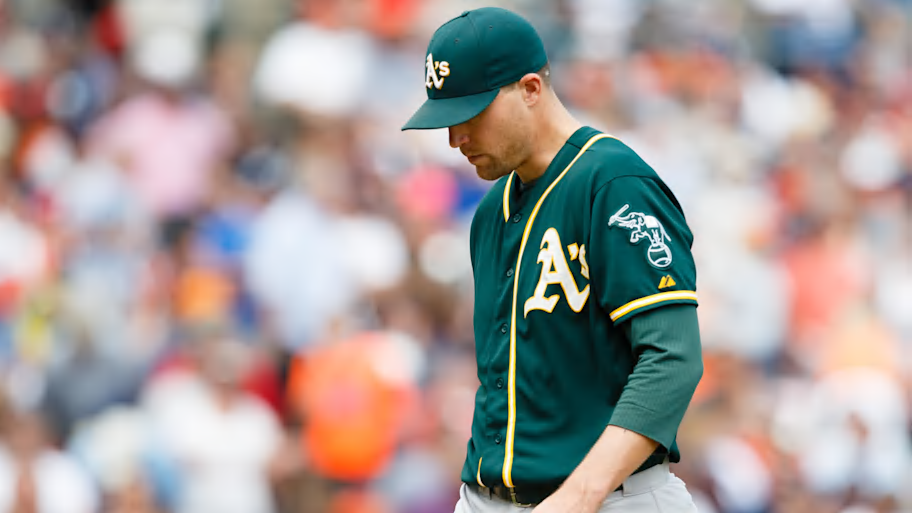
Grant Balfour departed following the 2013 season, signing with the Tampa Bay Rays in free agency. To help fill that enormous gap in the ninth inning, the A's traded for established closer Jim Johnson, who had saved 51 and 50 games for the Baltimore Orioles the previous two seasons. He was also paid $10 million that season, making him the highest paid player on the team.
Those high expectations weren't met, as Johnson's tenure with the Athletics got off on the wrong foot on Opening Day. He tallied one out and gave up two earned runs on two hits, a hit by pitch and a walk, leading to a loss. His second outing saw him get two more outs, but give up three runs in the process. By the middle of May he was pitching as early as the sixth inning.
Johnson was released by the A's that August.
This past winter, the A's signed José Leclerc to a free agent deal as bullpen depth, but after a Johnson-esque start to his season (complete with Opening Day meltdown) he landed on the IL for most of the season.
Ahead of the 2024 season, the A's signed righty Trevor Gott as a depth piece, but he needed Tommy John surgery before the season began, so the A's haven't had luck bringing in guys of late.
Recent Closer History
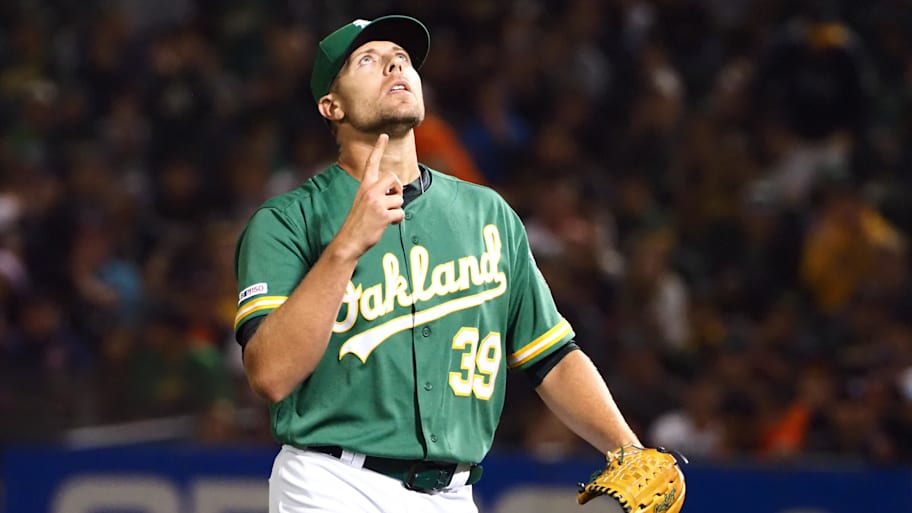
During the down years in 2015 and 2016, the A's went with established veteran relief pitchers in Tyler Clippard and Ryan Madson in the ninth inning, with the latter being traded to the Washington Nationals (with Sean Doolittle) for Blake Treinen and Jesús Luzardo.
Treinen would claim the job in 2018, posting a 0.78 ERA and finishing sixth in the AL Cy Young voting. He had saved three games with the Nationals in 2017 before the trade, and put up another 13 with the Athletics that season before notching 38 in 2018.
Treinen started 2019 as the guy in the ninth, notching 16 more saves, but he ended up with a 4.91 ERA and ended up giving way to Liam Hendriks and his 1.80 mark. Hendriks would earn 25 saves for the 97-win A's team.
After handing the ball to Lou Trivino (before trading him) in 2021 and Dany Jiménez in 2022, the A's signed veteran Trevor May, who had closed 12 games in eight seasons with the Minnesota Twins and New York Mets. After some early struggles, he got his mind right and ended up being quite effective in his final big-league season, posting a 3.28 ERA and 21 saves.
From there, it was Mason MIller in the ninth, until he too was traded.
What Does This Teach Us?
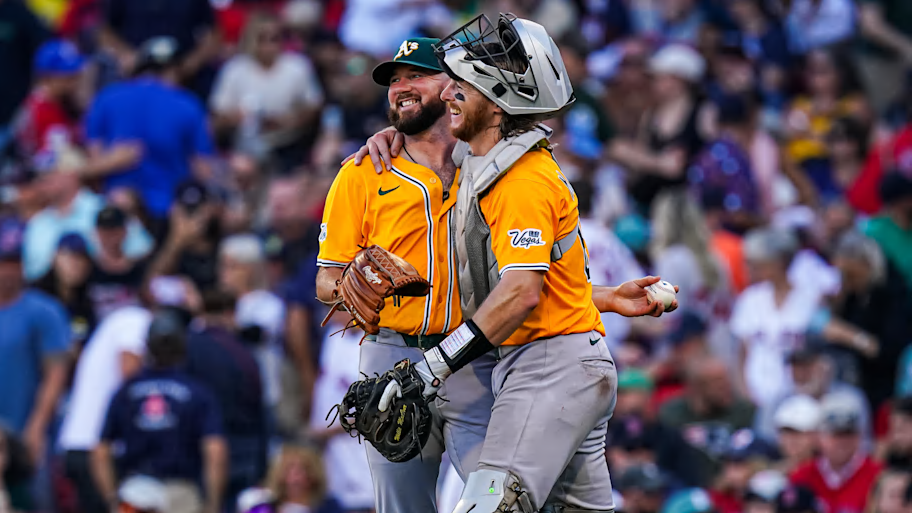
While the A's haven't been infallible in finding a closer over the years, they typically have some pretty solid options on hand to get the job done. The current group of arms certainly has the potential to close out games, whether it's Kelly, Hogan Harris, Elvis Alvarado or Ferguson. They also have younger guys like Eduarniel Nuñez that could enter into that discussion later in the season.
There's also a chance that they add a starter or two to the rotation mix, feel good about their depth there, and move Jack Perkins to the bullpen. His injury history is a touch concerning—like Miller's—and a similar move could be in the cards for him.
Forst also mentioned that the construction of a bullpen is "organic" each year, and this seems to ring true over the past 25 years. They've brought in talented arms and provided an opportunity for them by and large, and haven't leaned on seeking out a full-fledged closer too often.
Given the options they have, they may look to build up their depth/options further, and let the chips fall where they may when the season begins.
We've also learned that part of the A's success over the years has come from a variety of guys in the closer role, which speaks to the volatility of the position. There aren't many guys that can do the job year-in and year-out.
The best bet may be to have a collection of bullpen arms assembled this winter, and then when Spring Training begins, determine who's throwing the ball well and begin the season with that person as the ninth inning guy.
Lefty Hogan Harris finished the year with four saves down the stretch, which was the most for the club in the post-Miller Era. According to manager Mark Kotsay, he also has the right mentality for the role, where he doesn't let the previous at-bat, good or bad, linger with him.
The A's have internal options, but they could certainly look elsewhere for other options, too. They just may not be the established closers around the league.
More must-reads:
- Ranking four potential World Series matchups based on excitement level
- Five MLB stars who need to step it up in the postseason
- The 'MLB playoff debut strikeouts leaders' quiz
Breaking News
Trending News
Customize Your Newsletter
 +
+
Get the latest news and rumors, customized to your favorite sports and teams. Emailed daily. Always free!
